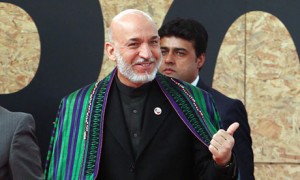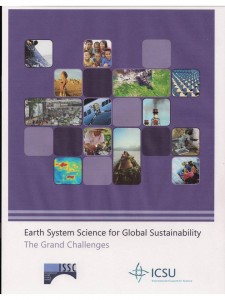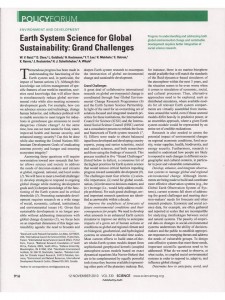Afghanistan: Special NightWatch Essay. Readers might wonder about the significance of comments about a new deadline for transferring security to Afghans, about the announcement that a squadron of Abrams M-1 main battle tanks is to be shipped to support the Marines in Helmand Province and the news report that combat air support has increased. These indicate significant decisions have been made that promise to change the Afghan fight into more of a war.
(Note: This essay is an analysis of developments this week and their implications, based on open sources. It is neither a criticism nor an endorsement.)
Change of focus. The repeated US and NATO public references this week to the year 2014 as an “aspirational” date for transferring security to the Afghans have been accompanied by an absence of substantive commentary about drawing down forces. This pattern invariably means a policy review has taken place and a significant change has been decided.
The focus is now on transferring security duties, not on drawing down forces. No official statements this week mentioned when the surge will end and the soldiers brought home. The vocabulary of the conflict has changed.
Clearly western forces will not begin drawing down in 2011 in any consequential numbers, as in Iraq. Any pullout would be for demonstration purposes, because combat operations are now set to continue for four or more years. President Karzai appears to be aware of this, according to new coverage from the NATO summit in Lisbon.
New deadlines. At the start of the week, officials described the transfer of security as occurring by 2014, which conventionally means by 31 December 2013. At mid-week, a spokesman clarified the intent as “by the end of 31 December 2014.” By Thursday, a further clarification described 2014 as a goal, a desirable target or an aspirational date, with the proviso that the real date for ending the combat mission might be 2015 or thereafter.
The repeated mention of 2014 by State and Defense Department officials was not accompanied by an explanation for the change from 2011; a statement of new or changed goals; or a definition of what constitutes transferring security duties and, especially, how much the costs will rise. Apparently some of the details will be worked in Lisbon and are likely to be announced after the summit.
The transfer of security duties always has been a goal, but not the primary goal in the sense with which it was treated this week. It seems to absorb the other goals that have had primacy in the past two years: breaking the momentum of the Taliban, building the Afghan forces, creating secure conditions for development, improving governance, win hearts and minds and so on. It seems to be broad enough to cover them all, but still lacks definition for the public to measure progress or know what to expect in the next four years.
Heavy armor. The announcement of the heavy armor commitment informs implies that some of the Marines will be permitted to fight like Marines in warfare. Main battle tanks bring to mind the images of the US armored forces dashing up the west bank of the Euphrates River in Iraq seven years ago.
This signifies another policy shift about the nature of the war. The long overdue introduction of heavy armor portends that tactics in some areas must continue to drift farther from the announced hearts and minds strategy.
More air power. The third announcement was a statement, en passant, that this month US and NATO forces have increased their use of airpower against the Taliban. One commentator said this means that US and NATO tactics are now aimed at exterminating the Taliban, not just breaking their momentum, a goal stated on multiple occasions. Defeating the Taliban is an included task in a mission to transfer security to Afghan forces.
The broader implication appears to be that US and NATO forces appear to be returning to some of the tactics that worked earlier in the Afghan War. One condition that the fighting data in 2009 and 2010 establish is that the Taliban are not afraid of US and NATO forces, unless they are backed by air power. Conversely, their collective memory of defeat in 2001 by a significantly smaller US force is that they had no defense against US air power. That remains the case today.
Cumulatively, the announcements and actions appear to point to an escalation and prolongation of the Afghan War. If so, they should have a strongly discouraging effect on the Taliban leadership in Pakistan who persist in boasting that they will wait out the Americans.
A second consequence should be a reduction of coalition losses. The Afghans are not stepping up to the fight much more than before, based on casualty reporting in the Afghan media. Coalition forces should start cutting losses by rebuilding the aura of invincibility, which they had in 2001 and which rested on effective use of air power, but can now include tanks.
A third consequence should be gradual demoralization of the Taliban fighters in two respects: less hubris and more losses. Taliban web postings boast about attacking coalition forces in their bases. The reports of fighting often bear out the boasts. That hubris should diminish as losses increase.
As for Taliban casualties, during the summer and autumn offensive between June and November 2008, the Taliban sustained more than 1,000 killed a month every three months in a 90-day cycle. After a month of increased operations in June, they went to ground, reduced operations, regrouped, rearmed and recruited. After 30 days of down time, they again increased operations in August and lost another thousand fighters. They repeated that cycle once more in October and stretched it into November 2008, before they ended what appears to have been a premature and disastrous attempt to seize and hold ground. They have never tried that again.
In 2009 and in 2010, they have not been willing to take such losses. A thousand dead a month over a combat season represents the threshold for breaking the back of the Taliban and reducing it to banditry. In part, their aggressive operations in 2009 and 2010 may be attributed to restrictions on the use of air power. If those are easing, the Taliban can be defeated for a time.
A fourth consequence is that the coalition might begin to start making its own luck. Diligent prosecution of the fight in a more warlike fashion is more likely to shorten the conflict than the mixture of fighting with development projects to win hearts and minds. Under the pressure from no withdrawal date and increased losses, the Taliban inside Afghanistan might be more receptive to negotiations.
If the changes are implemented consistently, and are not just piecemeal, spot fixes, they should improve security conditions. However, they also are likely to produce significant negative consequences in property damage, civilian and militant casualties and bad press, all consistent with a war. On the other hand, the stalemate will continue if the most important change is a longer conflict.
NIGHTWATCH KGS Home
Phi Beta Iota: Emphasis added. There is a very strong flavor here of the Marines taking a greater interest in the Afghanistan War, where the author of the two books below now teaches. We are troubled by the continued expenditure of blood, treasure, and spirit abroad, when we have so many needs here at home. The new contract for a $750 million embassy-fortress in Islamabad, joining similarly expensive embassy-fortresses in Kabul and Baghdad, while poverty and homelessness sky-rockets in the USA, is a clear indication of where the Administration wishes to focus.
Review: Triumph Forsaken–The Vietnam War, 1954-1965 (v. 1)
Review: A Question of Command: Counterinsurgency from the Civil War to Iraq (Yale Library of Military History) (Hardcover)









